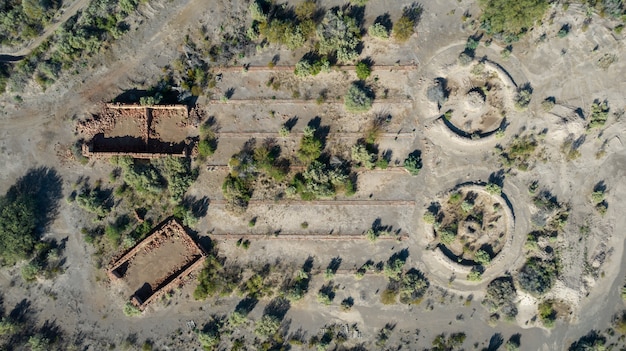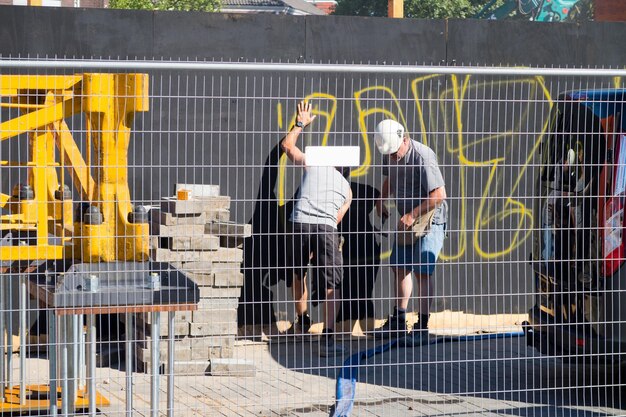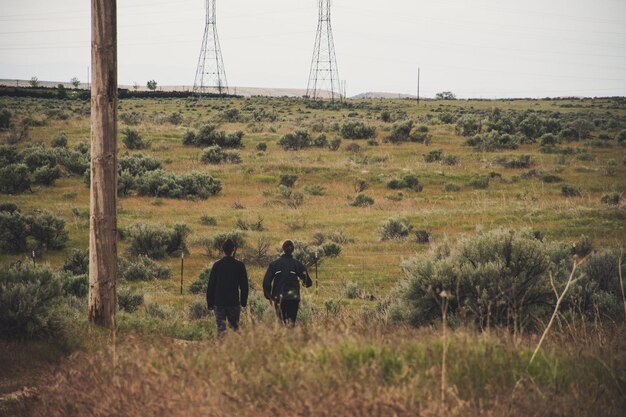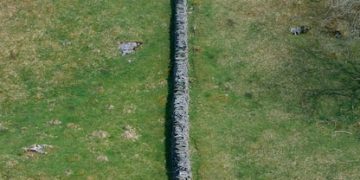Republican Border Strategy 2025: Analyzing the GOP’s Plan

The Republican Party’s border security strategy for 2025 focuses on enhanced physical barriers, increased technology, heightened enforcement, and altered legal frameworks to deter illegal immigration and secure the US-Mexico border.
The border security strategies proposed by the Republican Party for 2025 promise a significant shift in how the United States manages its southern border. A close evaluation of these strategies is essential for anyone interested in understanding the future of immigration policy.
Republican Party’s Strategy for Securing the US Border in 2025: An Overview
The Republican Party’s approach to border security in 2025 centers on a multi-pronged strategy designed to drastically reduce illegal immigration and enhance national security. This strategy involves reinforcing physical infrastructure, deploying advanced surveillance technology, and implementing stricter enforcement measures within existing legal frameworks.
Key Pillars of the Republican Border Security Plan
Several key pillars form the foundation of the Republican Party’s plan. These include completing the border wall, increasing the number of border patrol agents, and enhancing technological surveillance capabilities along the border.
- Enhanced Physical Barriers: Completing and reinforcing the border wall to deter illegal crossings.
- Technological Deployment: Utilizing drones, sensors, and advanced surveillance equipment for better border monitoring.
- Increased Enforcement: Hiring more border patrol agents and empowering them to enforce immigration laws more effectively.
Furthermore, the strategy encompasses legislative efforts to close loopholes in existing immigration laws and streamline deportation processes to ensure quicker and more efficient removal of undocumented immigrants.
In conclusion, the Republican strategy emphasizes a significant increase in resources and stricter enforcement measures, which aim to secure the border by significantly deterring illegal immigration through a combination of physical and technological barriers.
The Border Wall: Construction and Completion Plans
Central to the Republican border strategy is the completion and enhancement of the border wall. This initiative aims to provide a physical barrier that effectively deters illegal crossings and facilitates more controlled access to the United States.

Completing the wall involves not only building new sections but also reinforcing existing structures. Republicans argue that a complete and well-maintained wall is crucial for effective border control.
Impact of the Border Wall on Illegal Immigration
The border wall is intended to reduce illegal immigration by making it more difficult and dangerous to cross the border. Whether or not this approach is effective remains a subject of intense debate.
- Deterrent Effect: Wall advocates argue it deters potential border crossers.
- Resource Allocation: Construction and maintenance divert money and manpower.
- Environmental Impact: Environmentalists raise concerns about habitat disruption.
The construction and completion of the wall remain a controversial issue, with debates focusing not only on cost and effectiveness but also on moral and environmental implications.
In brief, the border wall is a key component of the Republican strategy. The ongoing debate underscores its significant political, economic, and logistical challenges.
Technological Surveillance: Drones, Sensors, and More
Beyond physical barriers, the Republican border strategy places a strong emphasis on leveraging advanced technology to enhance surveillance and monitoring capabilities along the border. Drones, sensors, and sophisticated tracking systems are seen as vital components of a modern border security apparatus.
Technological deployment aims to provide real-time surveillance data to border patrol agents and allow them to respond more effectively to illegal activity.
Examples of Border Surveillance Technologies
Several types of technologies are being considered for deployment along the border, each offering unique capabilities for detection and monitoring.
- Drone Surveillance: Aerial monitoring to detect and track movement in remote areas.
- Sensor Networks: Ground-based sensors that can detect footsteps or vehicle movement.
- Facial Recognition: Identifying individuals based on facial characteristics.
Critics, however, express worries about privacy and potential misuse of surveillance technologies. It is important to achieve a balance between security enhancement and protecting individual liberties.
In conclusion, the integration of advanced technology is a key part of the Republican border strategy, promising more effective monitoring and response capabilities. The use of technology along the border raises important questions about privacy and oversight.
Enforcement and Personnel: Border Patrol Expansion
A pivotal component of the Republican border strategy involves significantly increasing the number of border patrol agents and empowering them with enhanced resources and authority to enforce immigration laws more rigorously.

Increased enforcement is seen as essential to deter illegal immigration, apprehend those who cross the border illegally, and remove individuals who violate immigration laws.
The Role of Border Patrol Agents in Enforcement
Border patrol agents play a critical role in the enforcement of immigration laws, including apprehending individuals crossing the border illegally, seizing contraband, and conducting investigations into human trafficking and smuggling operations.
- Apprehension: Arresting individuals who cross the border illegally.
- Interdiction: Seizing drugs and other contraband.
- Investigations: Investigating criminal activities related to border security.
The expansion of the border patrol requires addressing concerns related to training, oversight, and accountability to ensure that agents operate effectively and within legal parameters.
The Republican border strategy aims to substantially increase the effectiveness of enforcement efforts and provide border patrol agents with the support they need to carry out their duties.
Legal and Legislative Changes: Closing Loopholes
The Republican border strategy also focuses on pursuing legal and legislative changes to close what they perceive as loopholes in existing immigration laws. Streamlining deportation processes is another significant aspect of this effort.
By pursuing legislative changes, Republicans aim to clarify and strengthen immigration laws, making it more difficult for individuals to exploit legal loopholes to remain in the country illegally.
Examples of Proposed Legal Changes
Several legal changes have been proposed to enhance border security and streamline immigration enforcement, including:
- Asylum Reform: Raising the standards for asylum claims to reduce fraudulent applications.
- Visa Overstays: Strengthening enforcement against individuals who overstay their visas.
- Deportation Processes: Expediting deportation procedures for individuals who have been convicted of crimes.
These proposed legal changes encounter strong resistance from advocacy groups, who argue that they could potentially harm vulnerable populations and undermine due process protections.
In summary, legislative and legal revisions are a key component of the Republican border strategy, designed to ensure that immigration laws are effectively enforced and loopholes that may facilitate illegal immigration are addressed.
Economic Impact and Cost Considerations
Implementing the Republican border strategy involves substantial economic costs and potential impacts that require careful consideration. Funding the construction of the border wall, deploying advanced technology, and increasing border patrol personnel will require significant investment.
Economic considerations are central to the debate surrounding the Republican border strategy. It is imperative to carefully assess the economic consequences of proposed border security measures.
Economic Implications of Border Security Measures
Enhanced border security measures can have a variety of economic implications, including:
- Job Creation: Construction and maintenance create employment opportunities.
- Trade Costs: Border delays increase trade operational expenses.
- Revenue Generation: Reduced illegal activity boosts national revenue.
Analyzing the economic impact of different border security options is essential to make informed decisions about resource allocation and investment priorities.
In conclusion, understanding the economic impact and cost implications is essential for evaluating the Republican border strategy comprehensively and determining its feasibility over the long term.
Political and Social Repercussions
The Republican border strategy has significant political and social repercussions that extend far beyond the immediate issue of border security. The policies embraced can significantly influence public attitudes toward immigration and shape the broader political landscape.
Political and social considerations are deeply intertwined with the debate over border security, and the Republican border strategy is likely to continue to be a contentious issue.
The Impact on Immigration Policy
The Republican border strategy has the potential to reshape immigration policy by prioritizing enforcement and deterrence. This approach can lead to stricter immigration laws and increased scrutiny of asylum claims and visa applications.
- Political Polarization: Border security measures deepen existing divisions.
- Social Tensions: Immigration debates exacerbate social strains.
- Public Opinion: Border policies influence general public perceptions.
Political and social factors ensure that the Republican border strategy will be a key topic of discussion in the years to come.
In summary, the political and social repercussions of the Republican border strategy are extensive, impacting everything from public attitudes toward immigration to the overall political discourse.
| Key Point | Brief Description |
|---|---|
| 🧱 Border Wall | Completion and reinforcement of a physical barrier to deter illegal crossings. |
| 📡 Technology | Use of drones, sensors, and surveillance for real-time border monitoring. |
| 👮 Enforcement | Increasing border patrol agents and enhancing their enforcement capabilities. |
| ⚖️ Legal Changes | Reforming asylum processes and expediting deportation procedures. |
Frequently Asked Questions
▼
The primary objective is to significantly reduce illegal immigration and enhance national security along the US-Mexico border through a combination of physical barriers, advanced technology, and stricter enforcement.
▼
Technology, including drones, sensors, and facial recognition systems, enhances surveillance and monitoring capabilities, allowing for more effective detection and response to illegal border activity.
▼
Proposed changes aim to reform asylum processes by raising standards for claims, strengthen enforcement against visa overstays, and expedite deportation procedures for convicted criminals.
▼
Increasing border patrol agents allows for more effective enforcement of immigration laws, apprehension of illegal border crossers, and investigations into human trafficking and smuggling operations.
▼
Economic considerations include job creation from construction, increased operational expenses due to border delays, and revenue generation from reduced illegal activity. Careful economic impact analysis is essential.
Conclusion
In conclusion, the Republican Party’s border security strategy for 2025 constitutes a comprehensive and multifaceted approach designed to secure the US-Mexico border by focusing on enhanced physical infrastructure, advanced technological deployment, stricter legal enforcement, and reformed immigration policies. This strategy aims at creating a more controlled and secure border environment.





